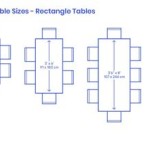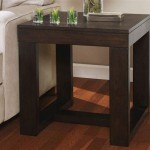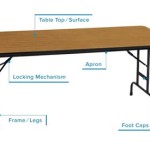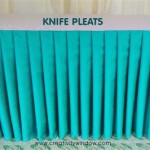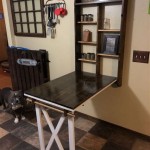How to Remove Scratches From a Glass Table
Glass tables, prized for their aesthetic appeal and functionality, can unfortunately fall victim to scratches. Everyday use, accidental impacts, and abrasive cleaning materials can all contribute to these unsightly blemishes. While deep scratches might necessitate professional intervention, many superficial scratches can be addressed with readily available materials and a bit of patience. This article details several methods for removing scratches from glass tables, ranging from simple solutions to more involved techniques.
Assessing the Scratch Damage
Before attempting any scratch removal method, it is crucial to properly assess the extent of the damage. This assessment will dictate the most appropriate course of action and the likelihood of success. Scratches are generally classified as either light or deep. Light scratches are typically superficial and can be felt with a fingernail, but they do not catch or snag. Deep scratches, on the other hand, are more pronounced, easily felt, and may catch a fingernail if dragged across them. The depth and severity of the scratch will impact the effectiveness of various repair methods.
To assess the scratch, clean the glass table thoroughly with a glass cleaner and a microfiber cloth. Ensure the surface is completely dry before proceeding. Examine the scratch under good lighting, preferably natural sunlight. Run a fingernail gently across the scratch. If the fingernail catches, the scratch is likely deep and may require more aggressive methods or professional repair. If the fingernail glides smoothly, the scratch is superficial and can often be removed with less intensive techniques.
Furthermore, consider the type of glass. Tempered glass, commonly used in tabletops for its increased durability, presents a unique challenge. Attempting to polish or sand tempered glass can compromise its structural integrity, potentially leading to shattering. Therefore, if the table is made of tempered glass, proceed with extreme caution and consult a professional if unsure.
Simple Cleaning and Buffing Techniques
Often, what appears to be a scratch is merely a surface mark or residue. Before resorting to more abrasive methods, try a simple cleaning and buffing approach. Start by cleaning the affected area with a dedicated glass cleaner and a clean, lint-free microfiber cloth. Wipe in a circular motion, applying gentle pressure. After cleaning, dry the area thoroughly with a separate clean microfiber cloth.
If the mark persists, consider using a mixture of distilled water and baking soda to create a mild abrasive paste. Mix equal parts of baking soda and water until a smooth paste forms. Apply the paste to the scratch using a soft, damp cloth. Gently rub the paste into the scratch in a circular motion for several minutes. Wipe away the excess paste with a clean, damp cloth, and dry the area thoroughly.
Another option is to use a non-abrasive toothpaste. Apply a small amount of toothpaste to a soft cloth and gently rub it into the scratch in a circular motion. After a few minutes, wipe away the toothpaste with a clean, damp cloth and dry the area. Ensure the toothpaste is a plain, non-gel formula without any added whitening agents or abrasive particles, as these could further damage the glass.
These cleaning and buffing techniques are most effective for removing very light scratches or surface marks. They are a safe and gentle starting point before attempting more aggressive methods.
Using Cerium Oxide Polishing Compound
For more persistent scratches, cerium oxide polishing compound is a frequently recommended solution. Cerium oxide is a fine powder that, when mixed with water, creates a slurry capable of polishing glass and removing scratches. It is available at most hardware stores or online retailers specifically designed for glass polishing.
Before using cerium oxide, gather the necessary materials: cerium oxide powder, distilled water, a small mixing container, a clean microfiber cloth, a felt polishing pad, and an electric drill with a polishing attachment (optional but recommended for larger areas). Protect the surrounding area with drop cloths or plastic sheeting to prevent splattering.
Mix the cerium oxide powder with distilled water according to the manufacturer's instructions. The mixture should form a thin, slurry-like consistency. Apply a small amount of the slurry to the felt polishing pad. If using an electric drill with a polishing attachment, set the drill to a low speed to avoid overheating the glass. Gently apply the polishing pad to the scratch, working in a circular motion. Maintain consistent pressure and keep the polishing pad moist with the cerium oxide slurry.
Continue polishing the scratch for several minutes, periodically checking the progress. Be patient and avoid applying excessive pressure, as this could damage the glass. After polishing, wipe away the excess slurry with a clean, damp microfiber cloth. Clean the area with a glass cleaner and dry it thoroughly.
Repeat the process as needed until the scratch is significantly reduced or eliminated. Cerium oxide polishing requires patience and attention to detail. It's important to work slowly and carefully to avoid creating new scratches or damaging the surrounding glass.
Addressing Deep Scratches: Professional Intervention
While cerium oxide can be effective for removing many scratches, deep scratches may require professional intervention. Attempting to remove deep scratches with DIY methods can be risky, potentially leading to further damage or distortion of the glass surface. Professional glass repair services possess the specialized tools, expertise, and materials necessary to address deep scratches safely and effectively.
Glass repair professionals typically employ techniques such as deep polishing with specialized equipment or, in some cases, glass filling and resurfacing. Deep polishing involves using progressively finer abrasives to gradually remove the scratched layer of glass until the surface is smooth. This process requires precise control and experience to avoid creating distortions or weakening the glass.
Glass filling involves filling the scratch with a specialized resin that is formulated to match the optical properties of the glass. The resin is then cured and polished to create a seamless repair. This method is often used for deeper scratches or chips that cannot be effectively removed by polishing alone.
Before engaging a professional glass repair service, obtain multiple quotes and inquire about their experience and qualifications. Ask for references and review their past work. It is also important to understand the limitations of the repair process and the potential for any residual imperfections. While professional repair can significantly improve the appearance of a scratched glass table, it may not always be possible to completely eliminate the scratch without replacing the glass.
When considering professional repair, weigh the cost against the value of the table and the severity of the scratch. In some cases, replacing the glass tabletop may be a more cost-effective or aesthetically pleasing option.
Ultimately, the decision of whether to attempt DIY scratch removal or seek professional assistance depends on the severity of the scratch, the type of glass, and the individual's comfort level with DIY repair techniques. Starting with the gentlest methods and progressing cautiously is always recommended. When in doubt, consulting with a glass repair professional is the best course of action to ensure the safe and effective repair of a scratched glass table.

How To Repair Scratches In Glass Tabletops Modernmom

How To Remove Scratches From Glass Moleroda Finishing Systems

How To Repair Scratches In Glass Tabletops Glassnow

How To Get Scratches Out Of A Glass Table Simply Tablecloths

9 Effective Ways To Remove Scratches From Glass Tables Homelyville

How To Remove Scratches From Glass Tables Worst Room

How To Remove Scratches From Glass Tables Worst Room

How To Remove Scratches Out Of Glass

How To Remove Scratches From Glass Furniture Glassdomain Blogglassdomain Blog

How To Remove Scratches From Glass

